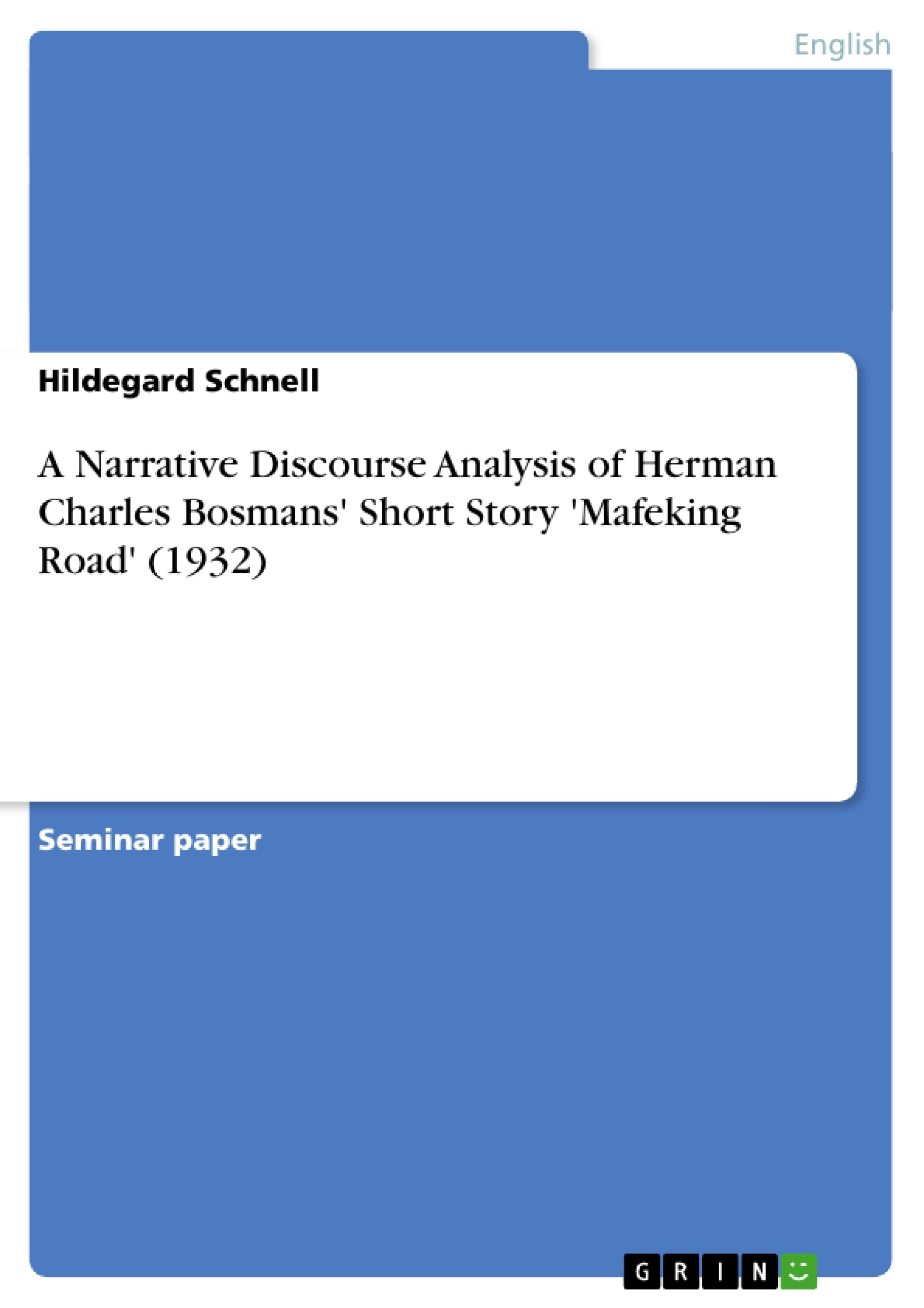In his current popularity, Herman Charles Bosman has come to be viewed as something of an “eternal artist” figure, conveying “marvellous home-truths for all men” (Gray 1977:79). But the truth about the later Bosman is that he became a writer who had a scrupulous, instant understanding with each passing day and each yard of newspaper that underwent his professional scrutiny. Stephen Gray suggests “that he [Bosman] meant himself to be taken as […] a commentator, a newspaper columnist, whose medium happened to be fiction” thus drawing attention to the underlying truths of South Africa (ibid.). By debunking the myth of Boer bravery during the second Anglo-Boer War (1899-1902) in his short story “Mafeking Road”, Bosman touches upon a subtle theme extant amongst the Boer community, namely extreme Afrikaner patriotism (Wenzel 1999:109-110).
Inhaltsverzeichnis (Table of Contents)
- Introduction
- The Anglo-Boer Wars (1880-1881 / 1899-1902)
- Herman Charles Bosman
- A narrative discourse analysis of H. C. Bosman's “Mafeking Road” (1932)
- An overview of narrative techniques and oral-style narrative modes
- Analysing "Mafeking Road" on the basis of narrative techniques and oral-style narrative modes
- Conclusion
Zielsetzung und Themenschwerpunkte (Objectives and Key Themes)
This paper aims to provide an in-depth analysis of Herman Charles Bosman's short story "Mafeking Road" through the lens of narrative discourse strategies. It explores how Bosman utilizes narrative techniques to critique the notion of fanatic patriotism, particularly by debunking the Boer myth of bravery during the second Anglo-Boer War.
- The construction and deconstruction of the Boer myth of bravery
- The role of narrative techniques in conveying political commentary
- The impact of the Anglo-Boer Wars on South African identity and nationalism
- The portrayal of Afrikaner society and its historical complexities
- The use of irony and satire in challenging established narratives
Zusammenfassung der Kapitel (Chapter Summaries)
The introduction provides background information on Herman Charles Bosman's literary style and his critique of Afrikaner patriotism, particularly the myth of Boer bravery during the second Anglo-Boer War. It sets the context for the subsequent analysis of "Mafeking Road."
The chapter on the Anglo-Boer Wars (1880-1881 / 1899-1902) offers a historical overview of the conflict, outlining the causes, key events, and impact on South African society. It highlights the role of Afrikaner nationalism, British colonialism, and the evolving dynamics between the two forces.
The section on Herman Charles Bosman provides a brief introduction to the author's life and work, focusing on his literary approach and his recurring themes, particularly his critique of Afrikaner society.
The chapter on narrative discourse analysis explores different narrative techniques and their application in analyzing "Mafeking Road." It examines how Bosman uses these techniques to deconstruct the myth of Boer bravery and to convey a nuanced perspective on the events of the Anglo-Boer Wars.
Schlüsselwörter (Keywords)
The primary keywords and themes of this paper include: Herman Charles Bosman, "Mafeking Road," narrative discourse analysis, Anglo-Boer Wars, Afrikaner patriotism, Boer myth of bravery, irony, satire, oral-style narrative modes, political commentary, South African identity, historical complexities.
- Arbeit zitieren
- Hildegard Schnell (Autor:in), 2009, A Narrative Discourse Analysis of Herman Charles Bosmans' Short Story 'Mafeking Road' (1932), München, GRIN Verlag, https://www.grin.com/document/128947



